Titans of the tracks: the industrialists who built the Senate of Canada Building

In February 2019, the Senate moved to the Senate of Canada Building, a former train station built in 1912. The Senate is expected to occupy its temporary location for at least 10 years while Parliament’s Centre Block — the Senate’s permanent home — is rehabilitated.
Although Centre Block was shuttered for rehabilitation work, Canadians can still experience its art and architecture through the Senate’s immersive virtual tour.
The Senate of Canada Building, for 50 years Ottawa’s central train station and now undergoing renovations to become the Senate of Canada’s temporary home, would not exist if not for the vision of two larger-than-life figures. They were titans of industry in an era when railways opened up North America and fortunes were made and lost building them.
John Rudolphus Booth became North America’s most powerful timber baron in the late 1800s, turned Ottawa into an industrial powerhouse and built the first rail line into the downtown.
Charles Melville Hays built on the foundations laid by Booth and helped transform Ottawa into a marquee destination and a capital city worthy of the title.
Booth became North America's biggest timber producer by acquiring logging rights to nearly 18,000 square kilometres of land — including much of the Ottawa Valley and Algonquin Park.
 Ottawa industrialist John Rudolphus Booth in 1904. (Library and Archives Canada)
Ottawa industrialist John Rudolphus Booth in 1904. (Library and Archives Canada)
He launched his business in 1859, supplying lumber for construction of the Parliament buildings. He built the world's largest lumber mill at Chaudière Falls on the Ottawa River and was soon producing beams and planks faster than he could get them to market, an impasse that pushed him into the railway business.
Booth snapped up two defunct rail lines in Quebec and Vermont, built a third line in Ontario, and, by the time he amalgamated his holdings into the Canada Atlantic Railway in 1897, had strung together a network stretching 650 kilometres from Vermont to Georgian Bay.
In 1902, Charles Melville Hays was promoted to vice-president and general manager of Grand Trunk, then North America’s biggest railway. In 1904, he negotiated the purchase of the 77-year-old Booth’s rail and shipping empire for $16 million, the equivalent of $520 million today.
“The Grand Trunk and the Canada Atlantic Railway were part of an expanding rail network that linked markets and communities and was — crucially — accessible year-round,” says Senator Serge Joyal, author of several books about Canadian history and a member of the Subcommittee on the Long Term Vision and Plan, which oversaw the Senate’s move to the Senate of Canada Building. “But railways were equally important to the project of Canadian unity; it was the promise of a railway that brought Nova Scotia, New Brunswick and B.C. into Confederation. We have to recognize the bold entrepreneurship of those promoters, but at the same time the impact it had on the ancestral territory and rights of the aboriginal peoples.”
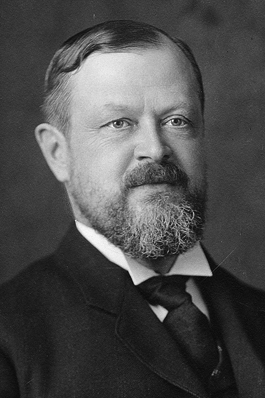 Grand Trunk Railway President Charles Melville Hays around 1910 (Library and Archives Canada).
Grand Trunk Railway President Charles Melville Hays around 1910 (Library and Archives Canada).
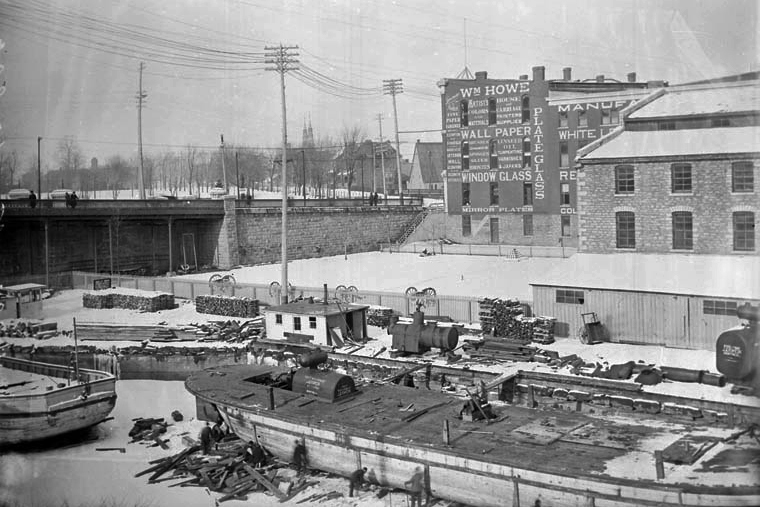 John Rudolphus Booth’s Central Station, occupying the site of today’s Senate of Canada Building, was a freight terminal when this photograph was taken in 1896. (Library and Archives Canada)
John Rudolphus Booth’s Central Station, occupying the site of today’s Senate of Canada Building, was a freight terminal when this photograph was taken in 1896. (Library and Archives Canada)
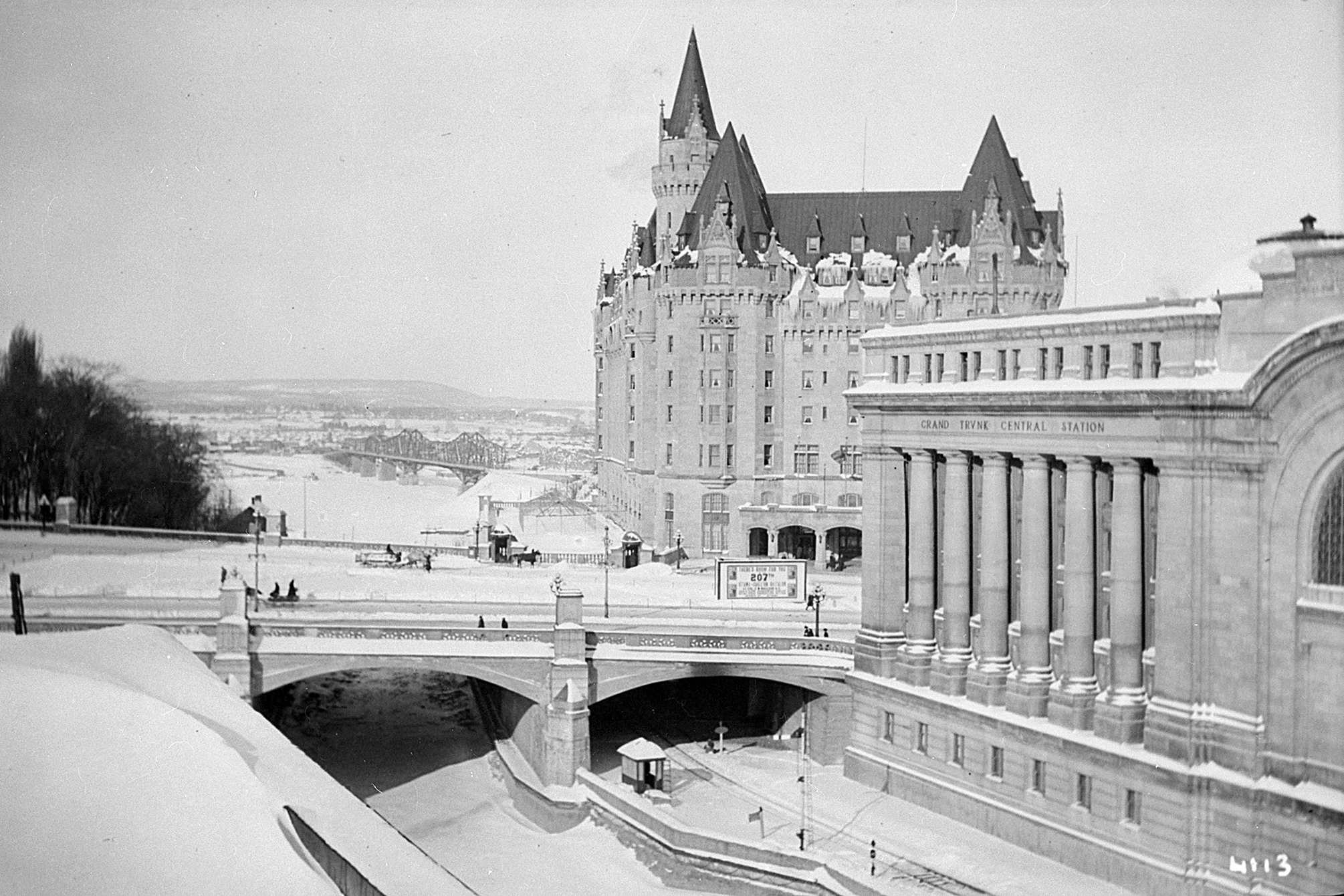 By 1916, Grand Trunk Central Station, Plaza Bridge and the Chateau Laurier — all completed in 1912 — had transformed the site. (Library and Archives Canada)
By 1916, Grand Trunk Central Station, Plaza Bridge and the Chateau Laurier — all completed in 1912 — had transformed the site. (Library and Archives Canada)
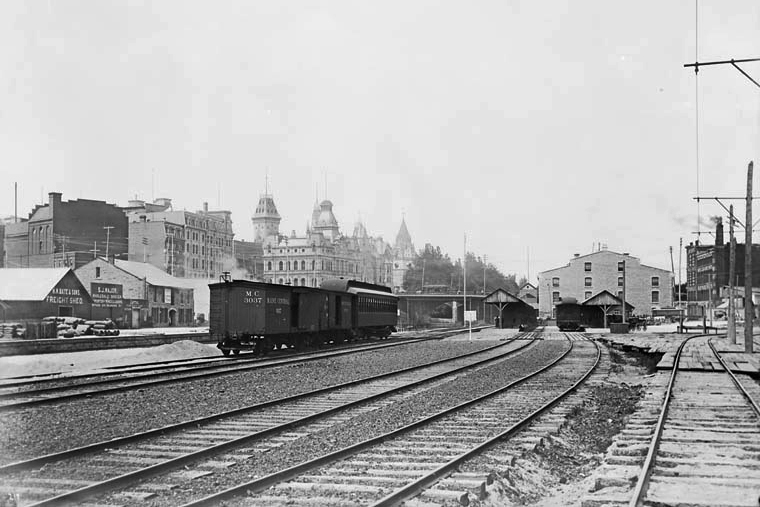
The rail sheds south of Central Station are visible in this 1895 photograph along with Parliament Hill and Ottawa’s old post office in the background. (Library and Archives Canada)
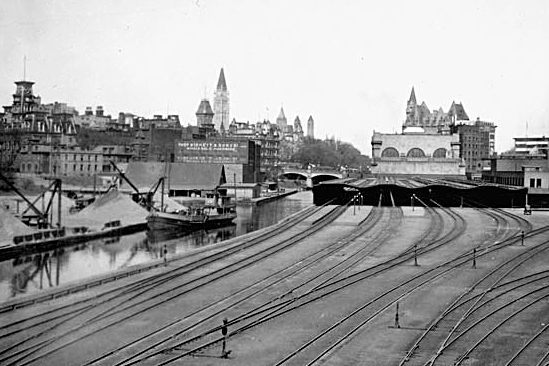 A similar view in the 1920s shows the expanded rail sheds behind the new station as well as the recently completed Peace Tower in the background. (Library and Archives Canada)
A similar view in the 1920s shows the expanded rail sheds behind the new station as well as the recently completed Peace Tower in the background. (Library and Archives Canada)
 Booth’s lumber mill near Chaudière Falls was the largest in the world in the 1890s. Parliament Hill’s West Block is visible in the background. (Library and Archives Canada)
Booth’s lumber mill near Chaudière Falls was the largest in the world in the 1890s. Parliament Hill’s West Block is visible in the background. (Library and Archives Canada)
Hays wanted to capitalize on the success Canadian Pacific had reaped with its coast-to-coast passenger service and string of luxury hotels that included Québec City’s Chateau Frontenac. Grand Trunk consequently tore down Booth’s brick-and-clapboard warehouse on Rideau Street and began constructing a new terminal, audaciously modelled on the ancient Baths of Caracalla in Rome. Not content with that, Hays determined to build a luxury hotel across the street that would draw tourists to Ottawa with its sheer opulence. By spring 1912, Grand Trunk Central station and the Chateau Laurier were nearly complete.
Tragically, Hays never lived to see the unveiling. Recently appointed president, he attended a meeting in early April with Grand Trunk’s directors in London, England. Eager to get back to Canada, he booked the fastest passage available — on a newly launched luxury liner said to be the world’s largest.
On April 14, 1912, RMS Titanic struck an iceberg near Newfoundland’s Grand Banks. The ship went down with Hays and 1,500 others aboard.
Grand Trunk ultimately could not survive the loss of its president. Hays had saved the company from bankruptcy in the 1890s but, at the turn of the century, had committed it to what proved to be a catastrophic project to build a rail line to the Pacific coast.
In the end, lagging 30 years behind Canadian Pacific’s trailblazing transcontinental link, Grand Trunk Pacific’s northern route never generated enough traffic to cover its costs. The government took it over in 1919 and amalgamated it with Canadian National Railways in 1923.
An earlier version of this article was published on September 29, 2017. This article is part of a series about the Senate of Canada’s move.


